Ever since visiting Greg Judy’s farm I’ve been looking for a good set of birdhouse plans. And while the internet is filthy with birdhouse plans, I couldn’t find anything that I was in love with.
My criteria are pretty strict, and the bird enthusiasts out on them internets sure don’t seem to share the same criteria. For farm use, a birdhouse needs to be tough enough for a cow to scratch on it, quick and easy to build, and relatively cheap. Preferably, the birdhouse should be unfriendly to Sparrows.
First, lets cover why we want bluebirds on our farm, and why we should build houses for them.
Bluebirds are a native cavity-nesting songbird. For farmers who grow crops for market, bluebirds can be a big help because their diet is mainly bugs. More specifically, they eat bugs that crawl around close to the ground, like those on your plants.
As a cavity-nesting bird, they evolved to nest in hollow-cavities in trees. Since we humans have a pretty universal habit of cutting down diseased and dying trees (ones likely to have cavities) we unintentionally eliminate a lot of bluebird habitat. It’s only right that we should restore some of that habitat, however artificially.
We have to be careful though, birdhouses aren’t a set-it-and-forget-it proposition. They need to be monitored in the spring and cleaned out every Fall. Monitoring is especially important due to a ubiquitous and unpleasant invasive species: the European House Sparrow. Sparrows will claim bluebird nest boxes and even kill bluebirds in order to take over a nest. But the real big problem comes when you realize that Sparrows primarily eat grain and seeds. So if left unchecked, you’re good insect-eating birds will be replaced by birds that will chow down on your livestock feed.
So with all that out of the way, lets build some birdhouses!
First, download the plans here.
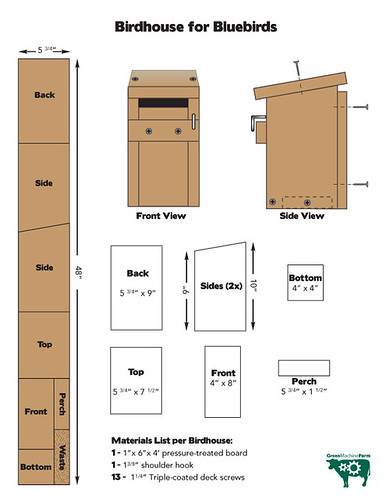
Second, acquire the materials. You’ll need:
- One 4′ length of 1″x6″ pressure treated lumber.
- One 1.375″ shoulder hook.
- Thirteen 1.25″ triple-coated deck screws
Next we’ll measure out the cuts (twice!) and make the cuts (once!)
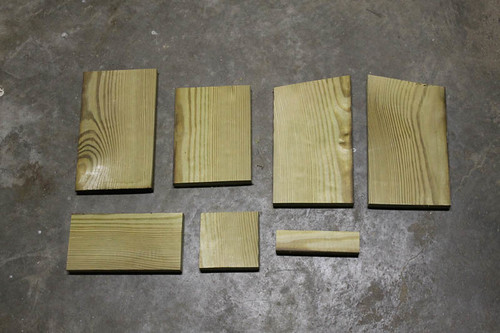
Now to start on assembly.
First we’ll attach the sides to the back. Leave a little gap up top for ventilation.
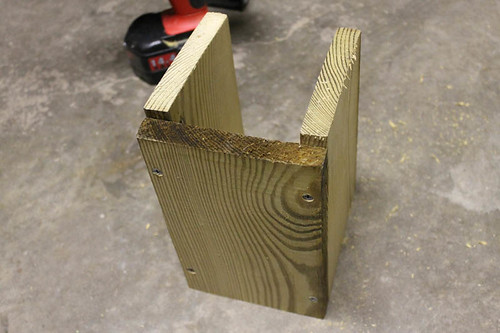
Next we’ll attach the floor, leaving gaps on either end to let water drain out.

Then we’ll attach the roof, making sure it’s flush with the back of the birdhouse
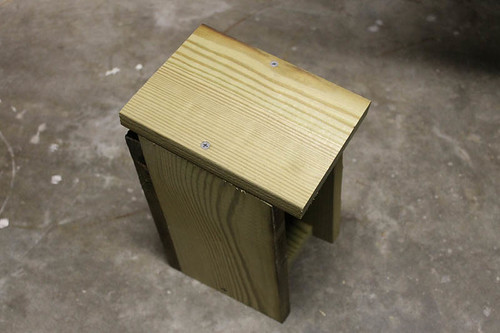
Now for the tricky part, marking the holes to hold the front panel on. The holes should be 3/8″ from the bottom, and 3/8″ from the front. Countersink and/or pre-drill the holes to make sure the wood won’t split.

Now it’s time to attach the front. Only use two screws on the bottom edge, so it swings down for inspection and maintenance.
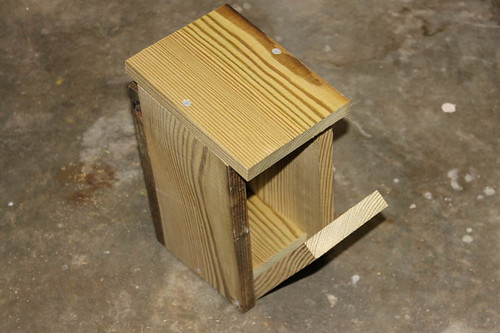
Now attach the perch to the front panel with two screws
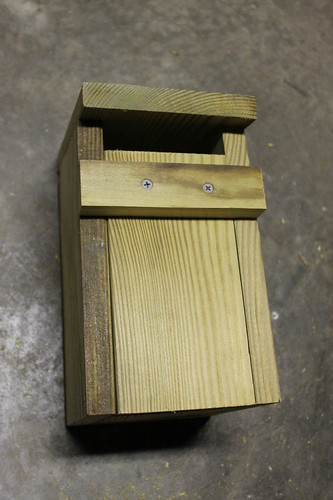
And install the shoulder hook. The shoulder hook is this little “L” shaped fella here. When pointed down, it keeps the door shut, but turn it around and the door should open right up.
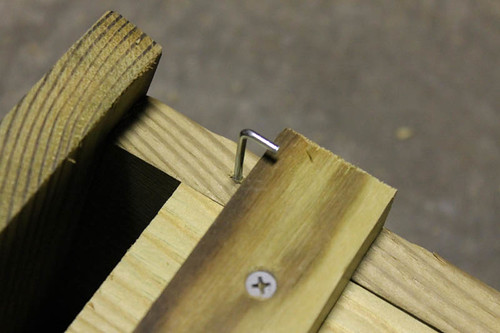
Before you know it you’ll have a bevy of bluebird houses, and they won’t break the bank either! The materials should cost you a bit less than $3 per birdhouse.
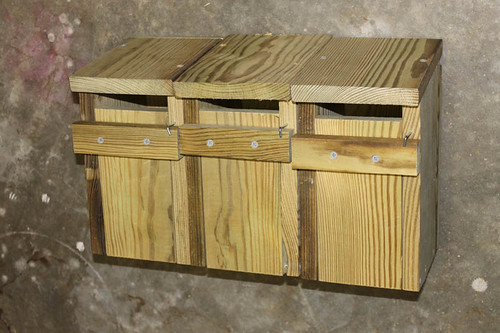
Now just find a nice garden fencepost to hang them on (around 5′ off the ground) and keep them 300′ apart, as bluebirds are pretty territorial little critters.
With all your hard work finished, just sit back and watch those bugs disappear!

[…] we already built plenty of Bluebird houses, good work! But as we discussed earlier, bluebirds mainly eat bugs that are at ground level. So […]
[…] I mentioned before, the European House Sparrow is a nasty little invasive species that likes to crowd out and even […]